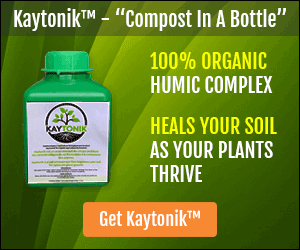People are questioning if the food we have today contains the same nutritive value as the food from many years ago? This is a valid question, so let’s explore the evidence.
Science claims the earth is approximately 4.54 billion years old. Historical records observe over 230 famines since 441 BC, when the first famine was reported in Ancient Rome. We’ve historically suffered lost crops due to climate, such as floods, dry conditions triggering fire, and destroying vegetation. Then there are the plant pests, and funguses causing famine. Now consider even todays food insecurity reported in Africa attributed to harsh conditions.
Food for sustenance has had challenges that go back for centuries, so how may any recently published study ever know if a carrot toady, is less nutritious to a carrot when Moses walked the Earth? Soil health impacts crop health and we’ve historically faced sharp challenges.
Irish immigration to North America was attributed to the Potato Famine. 1845 -1852 Phytophthora, a fungus infestation also known as Blight, causing death from starvation. The bananas in Costa Rica were almost all wiped out due to the fusarium fungus, also called “Panama Disease”. The banana was therefore genetically modified to be more resistant to threats. Lastly, Schistocerca Gregaria: Desert Locust, that only break out after abnormal high rainfall, has been around since biblical times.
The studies available to us, answer food nutrient content like University of Texas: Donald Davies, who explored vegetables between 1950 to 1999. This study concluded that there were declines in the minerals and vitamins of the 53 fruits and vegetables.
Another study done by the British Food Journal explored the same question, only to report findings that the foods tested between 1930 to 1980 the average calcium content declined 19%, iron declined by 22% and potassium 14%. If you were to compare an orange your grandparent ate back in the 1900’s; with today’s, we’d need to eat at least 8 oranges to get the same nutrient value.
So, what is happening to our food supply, and should we be concerned? To answer this question, I looked back at our agricultural history to explore what was happening in the early 1930’s and 50’s.
After World War II in 1945 all nations had to rebuild. The demand for global food production opened avenues of new technologies to create pesticides and fertilizers to produce high yield crops.
Agri-Chem companies were concerned with high response crops like corn, wheat, and rice. This echoes the number 1 New York Times best-selling Book, by MD. David Perlmutter: Grain Brain. Perlmutter claims our gut issues, allergies, and illness today stem from the deviation of our “ancestral” wheat and corn. We’ve deviated the authentic crop to the point it affects us adversely.
In 1964 poor countries such as the Philippines received HYR: High Yield Rice. It was found to be inferior in flavor, more glutinous, and less savory than the native varieties.
The Green Revolution deployed pesticides on crops that further killed off fish and other vegetation that coexisted with the rice paddies, which in turn were food sources to farmers.
What was supposed to support the model for food security, and farming productivity, effected agricultural biodiversity with the likes of heavy machinery, and pesticide techniques. We’re killing our soil with products, and then we need to consume more products in the form of vitamin supplements to compensate for deficiency.
Historically man has always had to fight the elements of nature to assure food security. Our science aimed to help us through the development of chemically synthesised products. Those products have produced bigger, prettier, and greater yields but at the trade-off from nutrient quality, and further to the extent of hurting our natural agricultural biodiversity.
The USDA stipulates no more than 10% inferior development, meaning that 20 to 30% of all produce is discarded because of slight imperfections. Our obsession is with the emphasis on food appearances, storability, and transportability, while creating nutritional decline through the insurgence of chemical manipulation that may hinder human health further – not to mention obstructing our soil’s vitality. This has socialized us to buy with our eyes, ignoring the validation of our innately sense of smell for the nutritious.
Our food chain has experienced many evolutions to try to feed the capacity of our population.
We understand more today. We’re trying to take corrective action to help ourselves, and our planet. We continually learn from nature to recycle, to build, to organize our cities, and create functional societies. Like hard working bees, building elaborate strong honeycombs for shelter and food.
Humbled by the gentle force of nature, she teaches us that we have a symbiotic relationship with her, and we must respect our soils – Earth – to live, if we want nutritious produce.
Despite our shortcomings of years past, don’t you have hope that we are headed in the right direction this time?















